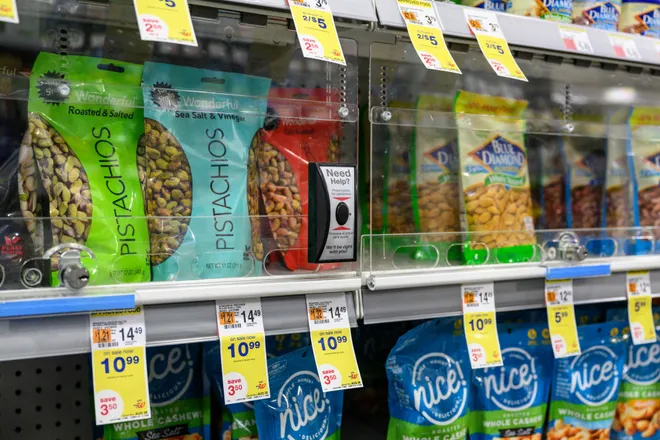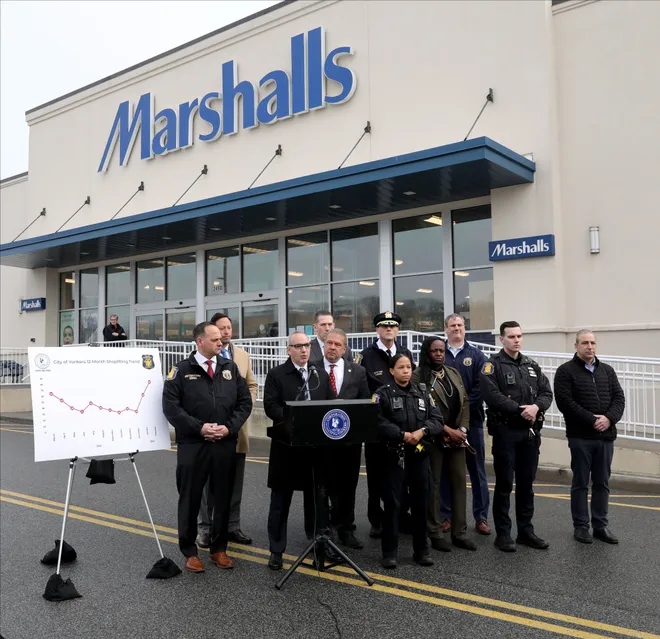Organized retail crime figure retracted by retail lobbyists
The National Retail Federation has walked back claims from an April report that organized retail crime made up nearly half of all inventory losses in 2021.
This update, made on Nov. 29, comes as stores raise alarms about a rise in retail theft. But was all the focus on theft overblown?
NRF spokesperson Mary McGinty said the lobbying group stands behind the fact that organized retail crime is “a serious problem impacting retailers of all sizes and communities” but recognizes the challenges the industry and law enforcement have with gathering and analyzing accurate data.

Organized retail crime statistic removed from NRF report
The updated NRF report, which was conducted in partnership with global risk advisory firm K2 Integrity, removes part of a line that claims nearly half of total annual retail shrink – an industry term for missing inventory – was attributable to "organized retail crime," a form of retail theft in which many people coordinate to steal products to resell them for profit.
McGinty said the error stemmed from a K2 Integrity analyst linking a 2021 NRF survey that found theft resulted in $94.5 billion worth of shrink with a quote from Ben Dugan, former president of the advocacy group Coalition of Law Enforcement and Retail (CLEAR), during a 2021 Senate testimony that said organized retail crime accounted for $45 billion in annual losses for retailers.
The problem, according to NRF, is that Dugan was referring to statistics for the overall cost of shrink in 2015, not the dollars lost to organized retail crime in 2021. (In addition to theft, shrink also accounts for inventory losses from broken items, administrative errors and other factors.)
McGinty said the trade group updated its report "based on recent statements from Dugan" that acknowledged he was citing a 2016 NRF report that found shrink cost the U.S. retail economy $45.2 billion in 2015.
CLEAR said it stands behind its estimate that organized retail crime leads to $45 billion dollars in inventory losses to stores every year, or anywhere from 40% to 60% of total retail losses. (A September NRF report, in comparison, says both internal and external theft accounted for about 65% of shrink in fiscal 2022.)
"This estimate was based off loss data collected directly from retailers and federal and state law enforcement agencies involved in the difficult work of defining and dismantling massive criminal networks targeting our communities," CLEAR's statement said.
K2 Integrity declined to comment.
What the data says
Retail crime data is notoriously hazy. Most law enforcement agencies tend not to break out organized retail crime in their crime data, and the shoplifting data we do have available is often self-reported.
Recent research suggests that while retail theft is up in some markets, it has actually fallen in others.
Is shoplifting on the rise?Retail data shows it's fallen in many cities post-pandemic
The Council on Criminal Justice found shoplifting trends since 2019 have been a mixed bag across 24 cities, with reports rising in places like New York and Los Angeles but falling in the majority of tracked cities including Denver, San Francisco and Minneapolis. Additionally, the study says the vast majority of shoplifting is not committed by groups, despite the prevalence of smash-and-grab incidents that make headlines.

“While theft is likely elevated, companies are also likely using the opportunity to draw attention away from margin headwinds in the form of higher promotions and weaker inventory management in recent quarters,” said an October note led by William Blair analyst Dylan Carden.
Disclaimer: The copyright of this article belongs to the original author. Reposting this article is solely for the purpose of information dissemination and does not constitute any investment advice. If there is any infringement, please contact us immediately. We will make corrections or deletions as necessary. Thank you.







